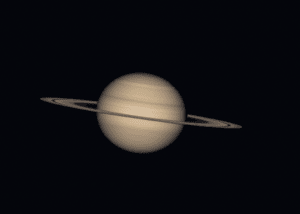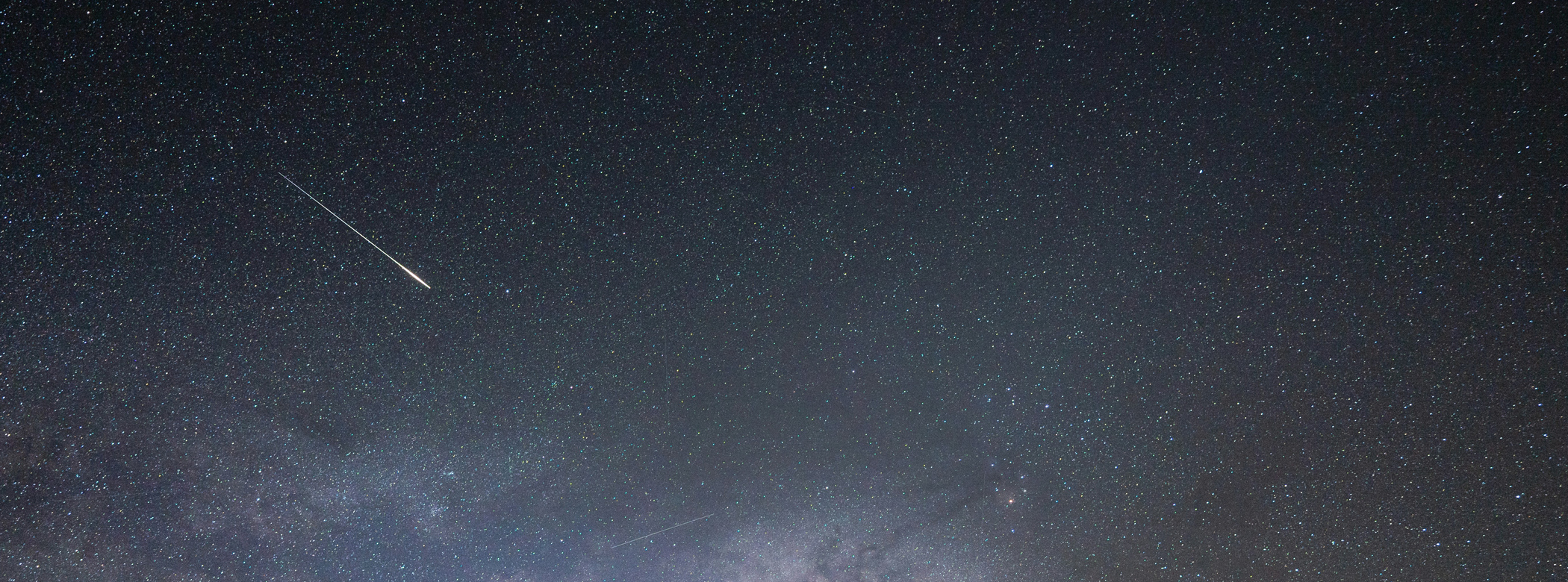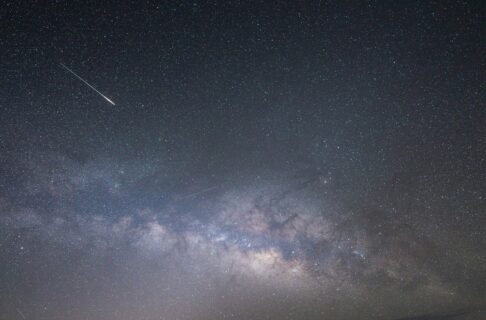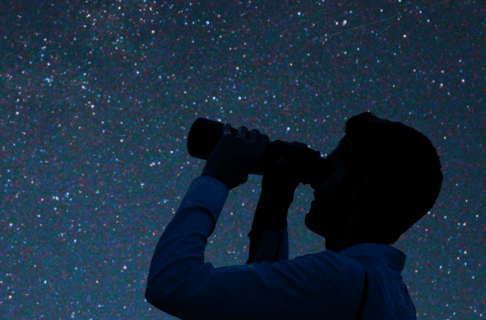August brings the return of some planets to the evening sky, the most famous meteor shower of the year, and longer nights than we’ve seen for a couple of months. The Milky Way is on full display, offering an unforgettable view from a dark, moonless sky. Unfortunately all of these benefits will likely be offset by smoke in the air from forest fires across Canada, which has become a fixture of summertime observing for the last several years.
The Perseid Meteor Shower
The annual Perseid meteor shower is the most famous meteor shower of the year, although it is not the best one of the year. Its occurrence in August during summer vacation likely makes it more accessible than the much better Geminids, which occur in mid-December. For a complete rundown on the Perseid meteor shower, check out this blog post.
2024 is a good year for the Perseids, since the peak time occurs with the Moon out of the sky. The thing about meteor showers is, they peak in the few hours before dawn for any given location. So to see the Perseids at their best, you want to observe from about 1:30 a.m. to dawn. There will be almost no meteors before midnight – you might see one or two, and the ones you do see will likely be bright ones, but it won’t be much of a “shower” unless you stay up all night.
To observe the Perseids, get away from city lights. Light pollution will wash out the fainter meteors, and there are a lot more faint meteors than bright ones. Bring a reclining lawn chair and blanket to ward off the early-morning chill, and set up facing the darkest part of the sky (or straight up, if you’re in a nice dark spot). Turn off your electronic devices and your car’s lights – any stray light will make it hard to see the meteors for you and anyone near you. The meteors only last a second or two, so you need to watch the sky continuously – literally, don’t blink or you’ll miss it.
You can also try and take pictures of meteors – set up your camera on a tripod and take a bunch of time exposures of the sky. If you’re lucky, a meteor will happen while you’re taking a picture.
We’d love to show your Perseid pics on Dome@Home, our online astronomy show. Send them to space@manitobamuseum.ca and then tune in to our August 28th show at 7 p.m. Central on the Museum’s Facebook and YouTube channels.
The Solar System
Finally, some planets are visible in the evening sky! Barely…
Mercury is still on the evening side of the sky, but in August it sets just after the Sun and so isn’t visible for Canadian viewers. Folks farther south still have have a chance to catch it early in the month, low in the west just after sunset.
Venus has appeared in the evening sky, although like Mercury it is still low in the sky; only its great brightness allows it to be spotted very low soon after sunset. The thin crescent moon is nearby on August 5th.
Mars rises about 2 a.m. local time in the northeast, inconspicuous compared to nearby Jupiter and both the Pleaides and Hyades star clusters. Mars and Jupiter pass less than half a degree apart on the morning of August 14th; see the Sky Calendar entry below for details.

Jupiter is the brightest “star” in the eastern sky after midnight, outshining all the visible stars as it cruises through the stars of Taurus. The waning crescent Moon is nearby on the morning of August 27.
Saturn rises about 11 p.m. local time early in the month, and moves into the south by dawn. The ringed planet reaches opposition on September 8, so it’s coming into its best viewing position for the year. The rings are only tilted about 4 degrees to our line of sight, making them appear very thin from our point of view. The nearly-full Moon is to Saturn’s left on the evening of the 21st.
Sky Calendar for August 2024
Click on highlighted dates for a star chart showing the view!
Aug 4: New Moon
Aug 11 – Aug 12 (morning sky): Best viewing for the annual Perseids meteor shower; see featured article above. Decent rates should occur the morning before and after as well.
Aug 12 (evening sky): First Quarter Moon
Aug 14 (morning sky): Jupiter and Mars are close together in the morning sky, separated by less than the size of the Full Moon. They’re still pretty close the morning before and after this date.
Aug 19: Full Moon
Aug 20-21 (after midnight into morning sky): The waxing gibbous Moon is to the left of and slightly above Saturn. The two are only about 3 degrees (6 Full Moon diameters) apart, fitting easily into the same binocular field-of-view.
Aug 26: Last Quarter Moon
Aug 27 (morning sky): The waning crescent Moon is above Jupiter, rising together in the morning sky about 1 a.m. local time in the morning sky. Mars is below and to the left, forming a not-quite-right triangle. The red supergiant star Aldebaran is to Jupiter’s right along with the Hyades star cluster, with the Pleaides above them all. The morning rising of these star clusters remind us that winter is coming.
Aug 28 (morning sky): The Moon, Mars, and Jupiter form a very squashed triangle pointing downwards in the eastern sky before dawn.
Aug: 29 (morning sky): By this morning the Moon has moved farther on, still forming a rough line with Mars and Jupiter in the early morning sky.






